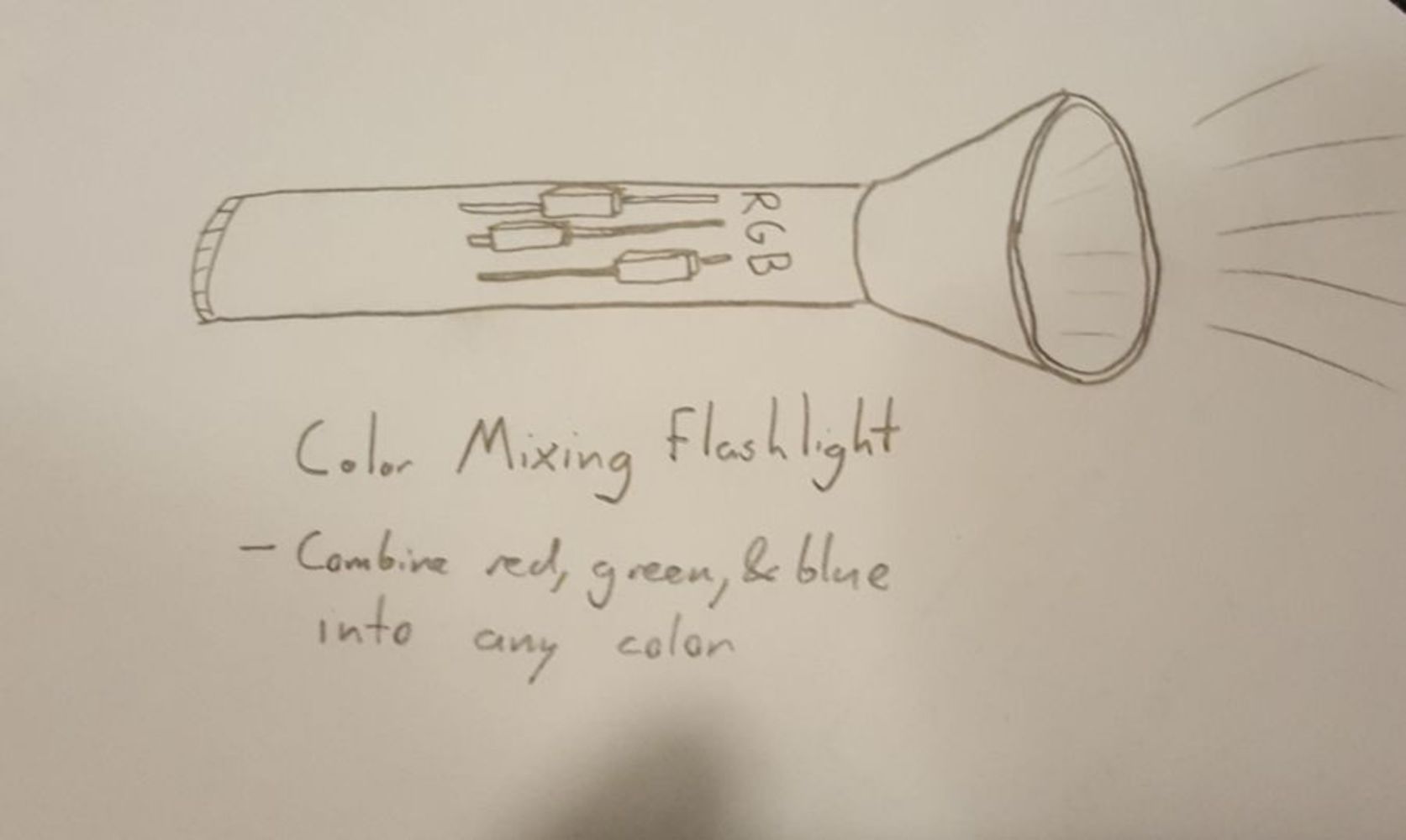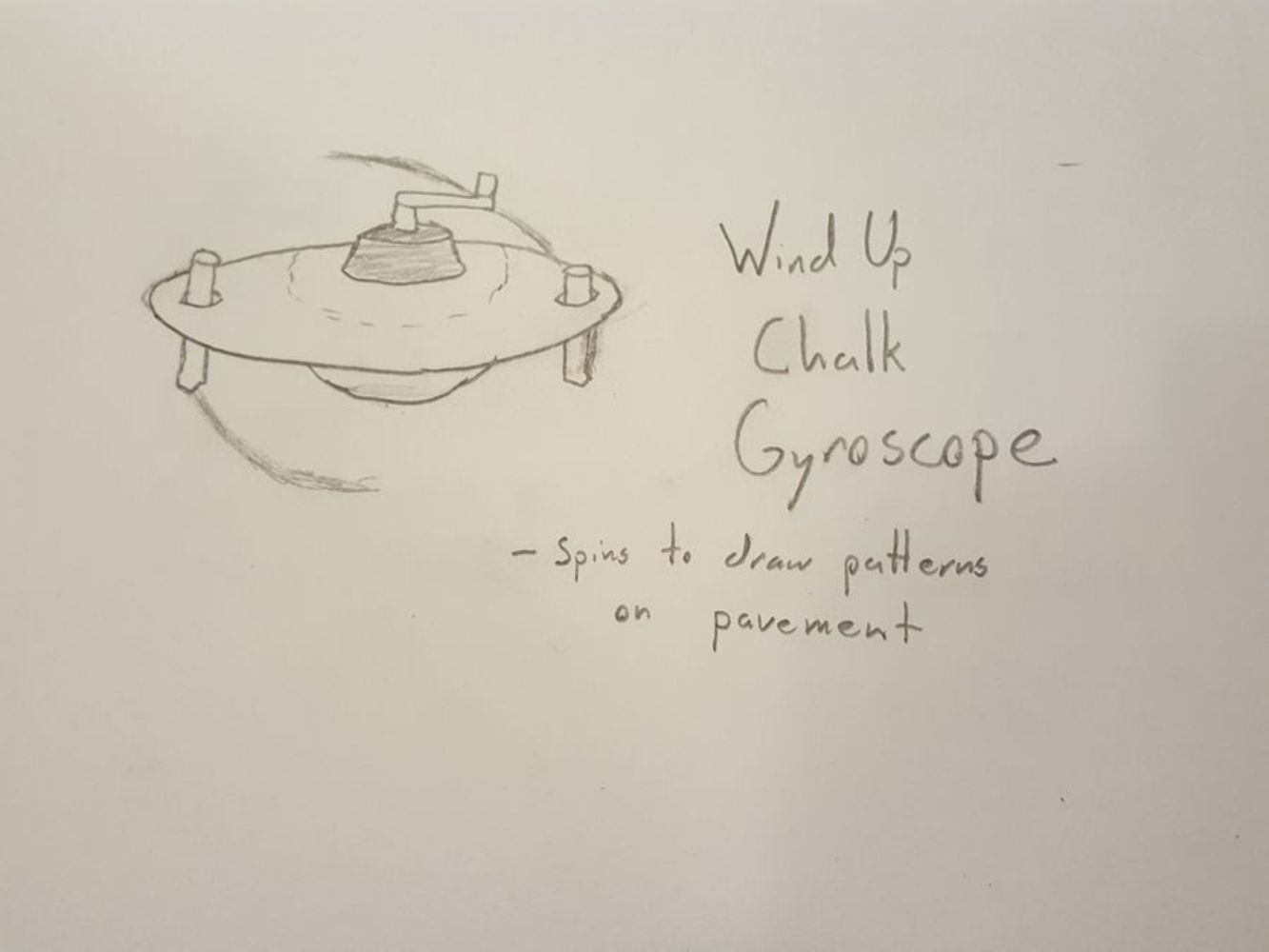Color Blending Flashlight
Principle: Learn how red, green, and blue wavelengths of light can be mixed together to create a full spectrum of perceived color.
Interaction: Children will use the sliders to individually increase or decrease the intensity of red, green, or blue light coming from the flashlight. In this way, children can make the flashlight shine any color of light.
Construction: This toy is built with the body of a traditional battery powered flashlight but contains red, green, and blue LEDs as the lighting elements.
Cost: Purchasing high intensity LEDs may be expensive but the rest of the components will be cheap. Regular, replaceable batteries will be used instead of rechargeable batteries to keep the cost low. Probably sells for ~$15.
Durability: The body will be constructed of ABS or another durable plastic, possibly with foam rings around the two ends to cushion any falls.
Safety: The lights will not be bright enough to cause eye damage. Large "D" batteries will be used that cannot be swallowed, and the battery cap will be attached to the body via a hinge. Recommended for ages 3+ .
Learned: Even a device as simple as a flashlight can be very entertaining to a child. As a kid, I used them to make shadow puppets or run around in the dark on secret missions. This concept adds another level of control and creativity.


